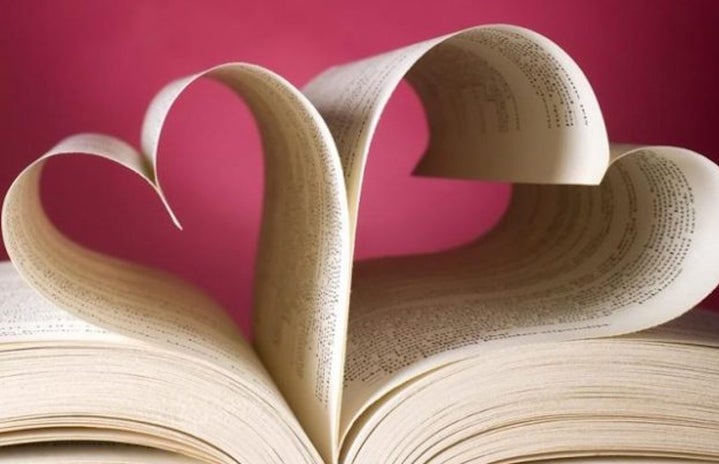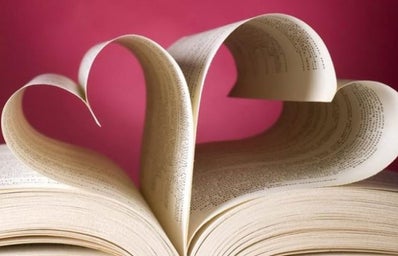“Who, being loved, is poor?” –Oscar Wilde
“If I loved you less, I might be able to talk about it more.” –Jane Austen
“Your heart knows the way. Run in that direction.” –Rumi
Since its conception, the romance genre has been widely regarded as inferior literature. In fact, many call it a “guilty pleasure.” When we think of romance, what often comes to mind is the sub genre popularized in the 70’s known as “bodice rippers.” They’re named for scenes where a heroine can be seen resisting sexual advances from a male love interest, leading to him literally ripping her bodice off. These questionable works have given way to our modern romance novels, and the current numbers are nothing to sneeze at. Romance is a $1.44 billion dollar industry, one that’s brought in the most sales of any literary genre for many years. Its audience is largely female, which may have something to do with why critics often call it poorly written and formulaic. But that couldn’t be farther from the truth.
Okay, so to some extent, romance novels are predictable. If you head to the section at the bookstore and slide one off the shelf at random, you can expect to see a number of familiar plot devices: a disastrous but memorable meet-cute, entertaining banter, a blurted confession of love, a second-act breakup, and of course, everyone’s favorite: the happily ever after. To the unseasoned eye, it might seem like authors are just going down a list, trying to check off all of their boxes. But what’s wrong with a little predictability? Romance is a safe space for many readers, including myself. There’s just something so satisfying about seeing two characters end up happy together despite all the obstacles thrown their way. And if we’re talking predictable, the same can be said for many other genres. For example, many police procedurals utilize stakeouts, interrogations, and frequently end in a chase or a shootout. High fantasy often takes characters on a quest to retrieve a magical object that could save the world. Science fiction space operas take place in, well, space. My point is, there’s also a lot more to this genre than meets the eye.
Romance has seen a large number of markets over the years. I firmly believe there’s something for everyone. Frontrunners include historical romance, like the regency genre (think Netflix show Bridgerton), paranormal romance, with its depictions of creatures like vampires, werewolves, and faerie, and finally, good ol’ contemporary romance, as close to our own everyday as you can get. Romantic suspense features an element of mystery and thrill, as two characters fall in love amidst danger and high stakes. There’s also romance with ties to spirituality and faith; you can find an entire shelf at my local Barnes & Noble devoted to Amish romance.
After sub genres, romance writers have a wide variety of tropes to play with. By now, we all know about the wildly popular enemies-to-lovers, which relies on clashing personalities and a boatload of tension. At the other end of the spectrum is friends-to-lovers, and then there’s love triangles, the one-bed-trope–-let’s all give a big thank you to hotel receptionists everywhere–-shouted confessions in the rain, forced proximity, forbidden love, second chance, mistaken identity, and soul mates, to name a few. My personal favorites are fake dating and marriage of convenience–I mean, are they just doing this because it’s part of their agreement? Or could they actually be falling for each other? Hint: they definitely are.
Romance novels aren’t all just sex or three hundred pages of fluff either. The best romance novels are usually a deep dive into personal relationships on all levels, like those with family, friends, and colleagues. Many of them expertly tackle heavier issues like grief, mental illness, and discrimination. Romance is colorful and nuanced, though not without its own issues: the genre could definitely use more POC characters, queer relationships, and less reliance on certain archaic values. Still, I believe romance opens up very important conversations about how far we would go for love, what healthy relationships look like, and the different love languages. We can all benefit from picking up a romance novel once in a while–-or, if you’re like me, a new one every week.
Without further ado, here is a list of great romance books to check out this Valentine’s Day! Don’t forget to check trigger warnings. https://booktriggerwarnings.com/index.php?title=Welcome
- You Deserve Each Other by Sarah Hogle
- Beach Read by Emily Henry
- Something to Talk About by Meryl Wilsner
- The Kiss Quotient by Helen Hoang
- Rent-a-Boyfriend by Gloria Chao
- Red, White, and Royal Blue by Casey McQuiston
- Spoiler Alert by Olivia Dade
- Pride, Prejudice, and Other Flavors by Sonali Dev
- Written in the Stars by Alexandria Bellefleur
- The Love Hypothesis by Ali Hazelwood
- Boyfriend Material by Alexis Hall
- What’s Not to Love by Emily Wibberley and Austin Siegemund-Broka
- XOXO by Axie Oh
- Happily Ever Afters by Elise Bryant


